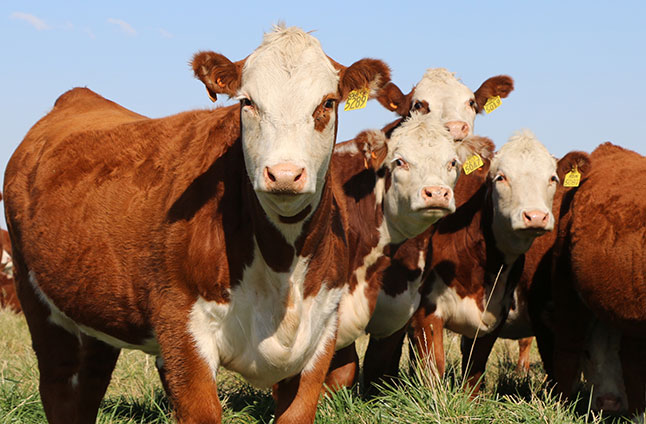
Senior Farm and Ranch Broadcaster, Ron Hays, is back talking with Oklahoma State University Extension Livestock Marketing Specialist Dr. Derrell Peel about the latest Cattle on Feed report issued by the USDA. Hays and Peel talk about how the industry is still ruminating about what the October report is telling us about rebuilding the beef cow herd in the days ahead.
“The last Cattle on Feed Report did come in with a surprisingly large placement number, so the market really capitalized on that bearish sentiment, and they used that to pull the markets down even further,” Peel said. “It certainly was a bit bearish in the short-term since there are more cattle on feed because of the placements.”
For the first time in a year, Peel said the on-feed number was above a year ago. The supply of cattle did not change as a result of this report, Peel added.
“It is really two things, I think,” Peel said. “Some of those things were probably drought-related movement of cattle that maybe marketed in September when they normally would have marketed in October and November…the other bigger part of it is really in that October report in terms of the heifer on feed number.”
Peel said the number of heifers in the feedlot was at the highest level for October in the current cattle-on-feed data series all the way back to 1996.
“The heifers represent 40 percent of all the cattle in the feedlot, and that means the way we were able to hold feedlot inventory higher than expected is because we continue to place and feed heifers instead of using them for any sort of breeding purposes,” Peel said.
One of the reasons there has not been much indication of herd rebuilding, Peel said, is because of the uncertainty relative to drought and forage conditions.
“If the meteorologists are right with the El Niño pattern, it looks like this is maybe the beginning of that from the way I understand it,” Peel said. “We are going to have kind of a wet winter, maybe colder than usual. Wetter in the Southern Plains and maybe not so much in the Midwest.”
Peel said these possible weather conditions suggest setting up for substantially better forage conditions through the first half of next year.
“If that happens, then I do think we will begin to see more indications of heifer retention and herd rebuilding as we get into 2024,” Peel said.
Regarding consumer purchasing of beef in the midst of tight cattle numbers, Peel said consumers may try to utilize ground beef consumption relative to other parts of the beef carcass.
“What this says is that all of them are going to get more expensive in a relative sense, so we are going to continue to see that squeeze,” Peel said.
The Beef Buzz is a regular feature heard on radio stations around the region on the Radio Oklahoma Ag Network and is a regular audio feature found on this website as well. Click on the LISTEN BAR for today’s show and check out our archives for older Beef Buzz shows covering the gamut of the beef cattle industry today.


















